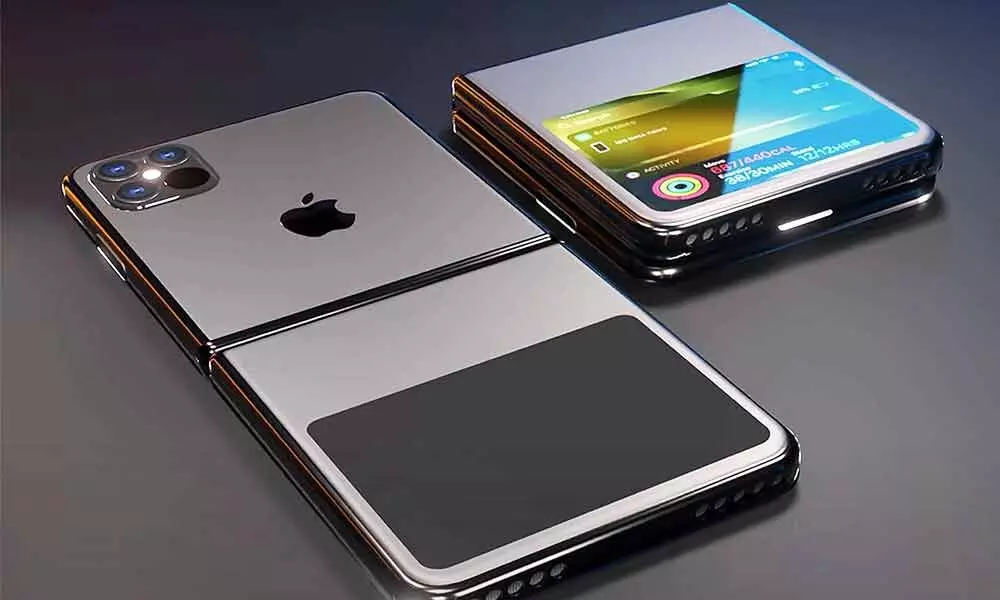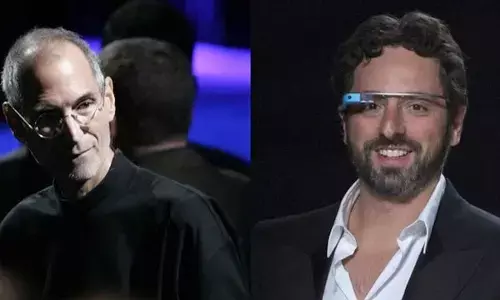Apple plans a foldable iPhone; 2021 models to get minor changes

Apple plans a foldable iPhone; 2021 models to get minor changes
Apple has developed folding display prototypes for internal testing but hasn't solidified plans to launch a foldable iPhone.
Apple Inc. has started work on an iPhone with a folding screen, a potential rival to similar devices from Samsung Electronics Co. and others. However, it only plans minor changes for this year's iPhone lineup.
The Cupertino, California-based company has developed folding display prototypes for internal testing but has not solidified plans to launch a foldable iPhone. According to a person familiar with the work, development work hasn't expanded beyond a screen, meaning Apple doesn't yet have full phone prototypes in its labs, who asked not to be identified to discuss private matters.
Like Samsung's Galaxy Fold, the Motorola Razr reboot, and other offerings from Chinese companies including Huawei Technologies Co., a foldable iPhone would allow Apple to make a device with a larger screen in a more affordable package. Apple has internally discussed several folding screen sizes, including one that folds out to a size similar to the 6.7-inch screen on the iPhone 12 Pro Max. Today's flip phones have 6- to 8-inch unfolded screens.
Apple's folding screens being tested, like Samsung's, have a near-invisible hinge with electronics positioned behind the screen, the person said. Other companies, including Microsoft Corp., have recently launched devices with visible hinges that separate two panels. An Apple spokeswoman declined to comment.
This would be a sea change for Apple. It is a pioneering touchscreen smartphone that is arguably the most successful consumer technology product in history, helping to make Apple the most valuable company globally. However, a foldable iPhone is likely to be years away or ultimately never present. The company is currently focused on launching its next-generation flagship iPhones and iPads later this year.
According to people familiar with the situation, Apple isn't planning any major changes to this year's iPhone lineup given improvements made to the smartphone in 2020, including 5G and new designs. Within Apple, engineers see the upcoming iPhones as another "S" version of the device, the nomenclature typically given to new iPhones with minor updates.
The Covid-19 pandemic also has complicated product development, as Apple's hardware engineers only work in the company's Silicon Valley offices a few days a week and in limited numbers. That has meant offloading the work to Apple engineers in China.
Last year, the pandemic delayed the launch of the iPhone 12 by several weeks. However, Apple could still include almost all the planned functions, except for an accessory called "AirTags" to locate physical items such as backpacks and keys. The company now plans to release that accessory this year and is planning multiple accessories for it, including a leather keychain. Samsung announced a similar gadget earlier this month.
Although the overall changes will be minor, Apple is still testing a key update for 2021: an in-display fingerprint reader. This would add a new method for users to unlock their iPhone, going beyond a passcode and Face ID facial recognition. Apple started moving away from fingerprint sensors in 2017 with the iPhone X launch, but Touch ID has remained a feature on cheaper Mac laptops and iPhones ever since. Earlier this month, Qualcomm Inc., which provides Apple with 5G modems, announced a faster in-display fingerprint sensor.
The feature would be convenient in an environment where users wear masks, often incompatible with facial recognition. An in-display fingerprint reader, which has also been included in Android phones for several years, could also be faster than Face ID for some users. However, Apple will not remove its facial recognition scanner, as it is still useful for augmented reality and camera functions.
Apple has also discussed the possibility of removing the charging port from some iPhone models in favour of wireless charging. The company switched to a MagSafe magnetic charging system with the iPhone 12, in addition to removing the charging block from the iPhone case last year. It's also bringing this charging technology back to the MacBook Pro.














